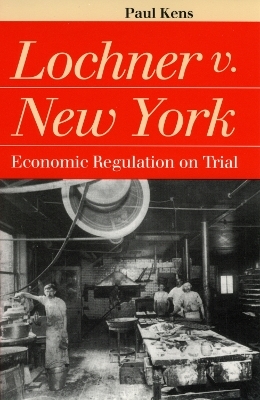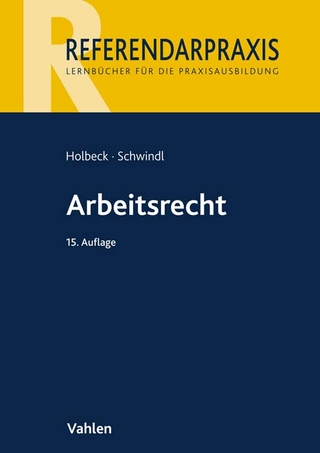
Lochner v.New York
Economic Regulation on Trial
Seiten
1998
University Press of Kansas (Verlag)
978-0-7006-0919-2 (ISBN)
University Press of Kansas (Verlag)
978-0-7006-0919-2 (ISBN)
Lochner v. New York pitted a conservative activist judiciary against a reform-minded legislature, and is a frequently-cited case in Supreme Court history. In this guide Kens shows why the case remains an important marker in the ideological battles between the free market and the regulatory state.
Lochner v. New York (1905), which pitted a conservative activist judiciary against a reform-minded legislature, remains one of the most important and most frequently cited cases in Supreme Court history. In this concise and readable guide, Paul Kens shows us why the case remains such an important marker in the ideological battles between the free market and the regulatory state.
The Supreme Court's decision declared unconstitutional a New York State law limiting bakery workers to no more than ten hours per day or sixty hours per week. By evoking its "police power," the state hoped to eliminate the employers' abuse of these workers. But the 5-4 majority opinion, authored by Justice Rufus Peckham and renounced by Justice Oliver Wendell Holmes, cited the state's violation of due process and the "right of contract between employers and employees," which the majority believed was protected by the Fourteenth Amendment.
Critics jumped on the decision as an example of conservative judicial activism promoting laissez-faire capitalism at the expense of progressive reform. As series editors Peter Hoffer and N.E.H. Hull note in their preface, "the case also raised a host of significant questions regarding the impetus of state legislatures to enter the workplace and regulate hours, wages, and working conditions; of the role of courts as monitors of the constitutionality of state regulation of the economy; and of the place of economic and moral theories in judicial thinking."
Kens, however, reminds us that these hotly contested ideas and principles emerged from a very real human drama involving workers, owners, legislators, lawyers, and judges. Within the crucible of an industrializing America, their story reflected the fierce competition between two powerful ideologies.
Lochner v. New York (1905), which pitted a conservative activist judiciary against a reform-minded legislature, remains one of the most important and most frequently cited cases in Supreme Court history. In this concise and readable guide, Paul Kens shows us why the case remains such an important marker in the ideological battles between the free market and the regulatory state.
The Supreme Court's decision declared unconstitutional a New York State law limiting bakery workers to no more than ten hours per day or sixty hours per week. By evoking its "police power," the state hoped to eliminate the employers' abuse of these workers. But the 5-4 majority opinion, authored by Justice Rufus Peckham and renounced by Justice Oliver Wendell Holmes, cited the state's violation of due process and the "right of contract between employers and employees," which the majority believed was protected by the Fourteenth Amendment.
Critics jumped on the decision as an example of conservative judicial activism promoting laissez-faire capitalism at the expense of progressive reform. As series editors Peter Hoffer and N.E.H. Hull note in their preface, "the case also raised a host of significant questions regarding the impetus of state legislatures to enter the workplace and regulate hours, wages, and working conditions; of the role of courts as monitors of the constitutionality of state regulation of the economy; and of the place of economic and moral theories in judicial thinking."
Kens, however, reminds us that these hotly contested ideas and principles emerged from a very real human drama involving workers, owners, legislators, lawyers, and judges. Within the crucible of an industrializing America, their story reflected the fierce competition between two powerful ideologies.
Paul Kens is associate professor of political science and history at Southwest Texas State University and the author of Justice Stephen Field: Shaping Liberty from the Gold Rush to the Gilded Age and Judicial Power and Reform Politics: The Anatomy of Lochner v. New York, on which this book is based. In 1996 the Supreme Court Historical Society awarded him the Hughes-Gossett Award for Historical Excellence for the best article published in its journal.
| Erscheint lt. Verlag | 31.10.1998 |
|---|---|
| Reihe/Serie | Landmark Law Cases and American Society |
| Verlagsort | Kansas |
| Sprache | englisch |
| Maße | 139 x 214 mm |
| Gewicht | 283 g |
| Themenwelt | Recht / Steuern ► Arbeits- / Sozialrecht ► Arbeitsrecht |
| Recht / Steuern ► EU / Internationales Recht | |
| Recht / Steuern ► Öffentliches Recht | |
| Sozialwissenschaften ► Politik / Verwaltung ► Staat / Verwaltung | |
| Wirtschaft ► Volkswirtschaftslehre ► Wirtschaftspolitik | |
| ISBN-10 | 0-7006-0919-9 / 0700609199 |
| ISBN-13 | 978-0-7006-0919-2 / 9780700609192 |
| Zustand | Neuware |
| Haben Sie eine Frage zum Produkt? |
Mehr entdecken
aus dem Bereich
aus dem Bereich
mit den wichtigsten Bestimmungen zum Arbeitsverhältnis, …
Buch | Softcover (2024)
dtv Verlagsgesellschaft
13,90 €
Lernbuch, Strukturen, Übersichten
Buch | Softcover (2023)
Franz Vahlen (Verlag)
22,90 €


